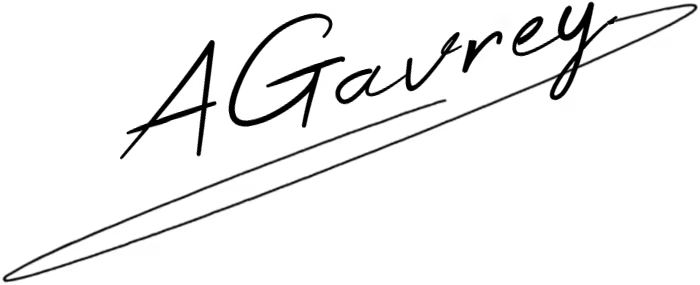Understanding Tax Refunds in Montana (MT)
Montana residents benefit from a well-structured tax system that provides opportunities for tax refunds. These refunds are an integral part of managing personal and business finances, ensuring compliance with state and federal regulations. The refund process involves a series of steps, from filing your taxes accurately to monitoring the status of your refund. Timely refunds can help families and businesses reinvest in local communities and support the state's economy.
This article provides a comprehensive guide on Montana tax refunds, covering everything from the filing process to common reasons for delays. Whether you're a first-time filer or an experienced taxpayer, understanding the nuances of the system can help you optimize your refund potential. Below, we delve into the requirements, methods, and tools available to ensure a smooth experience.
As part of our exploration, we will discuss key deadlines, highlight available resources, and provide tips for avoiding common errors. A detailed table, lists, and step-by-step guidance will further assist taxpayers in navigating Montana's tax refund landscape.
Eligibility Criteria for Montana Tax Refunds
To qualify for a Montana tax refund, you must meet specific criteria set by the Montana Department of Revenue. The primary requirement is filing an accurate state income tax return before the designated deadline. Income tax rates in Montana are progressive, meaning the percentage you pay increases with your income level. Residents and part-year residents who overpay taxes through payroll withholding or estimated tax payments are typically eligible for refunds.
Non-residents earning income in Montana must also file a return and may qualify for refunds if they meet state requirements. It's essential to calculate deductions and credits accurately, as these significantly affect the refund amount. Claiming exemptions such as dependent deductions can increase your refund eligibility. Always verify your filing status—single, married, or head of household—to avoid processing delays.
Special conditions apply to taxpayers with unique circumstances, such as small business owners or individuals with significant investment income. Additionally, retirees receiving pensions or Social Security benefits may qualify for specific deductions that enhance their refund prospects. Understanding these provisions ensures you're not leaving money on the table.
How to File for a Montana Tax Refund
The first step in securing your tax refund is filing your return. Montana allows taxpayers to file their income tax returns either electronically or via paper forms. Filing electronically through approved platforms is faster, more secure, and minimizes errors. Ensure you have all necessary documents ready, including your W-2 forms, 1099s, and receipts for deductions or credits.
When filing, double-check critical details such as your Social Security Number (SSN), income figures, and bank account information for direct deposit. Montana's tax filing deadline typically aligns with the federal deadline of April 15, unless an extension is granted. If you miss the deadline, you risk penalties and interest charges, which may reduce your refund amount.
Montana taxpayers can also benefit from free filing options if their income is below a certain threshold. Programs such as the IRS Free File partnership cater to low-income filers, ensuring they access their refunds without incurring additional costs. Always retain copies of your tax returns and supporting documents for at least three years, as these may be required for future reference.
| Filing Method | Processing Time | Additional Notes |
|---|---|---|
| Electronic Filing (E-Filing) | 1-3 weeks | Fastest and most secure option |
| Paper Filing | 4-6 weeks | Prone to errors and delays |
| Professional Filing Assistance | Varies | Recommended for complex returns |
Tracking the Status of Your Montana Tax Refund
Once you’ve filed your return, tracking your refund status is the next step. The Montana Department of Revenue provides an online tool called “Where’s My Refund?” to help taxpayers monitor their refunds in real time. To use this service, you’ll need your SSN or ITIN, the filing year, and the exact refund amount.
The system updates daily, so you can quickly check for changes in your refund status. Refunds issued via direct deposit typically arrive faster than paper checks, so consider this option if you want expedited processing. Ensure your bank account details are correct to avoid unnecessary delays.
Refunds may also be delayed due to specific issues, such as discrepancies in reported income or suspected identity theft. If additional documentation is required, respond promptly to ensure smooth processing. Always keep track of correspondence from the Montana Department of Revenue to address issues swiftly.
- Gather Required Information: Have your tax return and filing details ready.
- Access the Refund Portal: Visit the official Montana Department of Revenue website.
- Enter Your Details: Input your SSN, filing year, and refund amount.
- Check Status: Review the real-time status updates provided by the system.
Common Errors That Affect Montana Tax Refunds
Filing errors are among the most common reasons for refund delays or rejections. These mistakes can range from basic typographical errors to more complex miscalculations. One frequent issue is incorrectly reporting income, which can trigger audits or require amendments. Always verify your forms for accuracy before submission.
Another common error involves deduction claims. Overestimating deductions may raise red flags, while underestimating them can reduce your refund. Ensure all deductions are backed by valid documentation, such as receipts or invoices. Additionally, incorrect bank account details for direct deposit refunds can lead to significant delays.
Taxpayers should also avoid neglecting state-specific credits and exemptions. Failing to claim these benefits means missing out on potential refunds. When in doubt, consult a tax professional or use reliable tax software to minimize errors and maximize your refund potential.
- Double-check income figures to ensure accuracy.
- Verify banking information for direct deposit.
- Keep all deduction documentation organized.
- Use Montana-specific credits for additional savings.
- Seek professional help for complex filings.
Conclusion
Understanding and managing Montana tax refunds is essential for individuals and businesses alike. By filing accurately, utilizing electronic methods for faster processing, and claiming all applicable deductions, taxpayers can ensure they receive the maximum refund they are entitled to. For the 2023 tax year, over 1.2 million returns were filed in Montana, with 72% resulting in refunds averaging $1,200 per taxpayer. These figures underscore the importance of careful tax planning and filing strategies.
Proactive measures, such as using Montana's “Where’s My Refund?” tool, verifying bank details, and avoiding common errors, can significantly reduce processing times and delays. Remember that direct deposit remains the fastest way to receive your refund, with most refunds processed within 21 days of filing electronically. Paper filings, however, may take up to six weeks, highlighting the efficiency of modern e-filing systems.
With over $900 million in refunds issued statewide last year, Montana’s tax refund system continues to play a pivotal role in bolstering the financial health of its residents. By staying informed and leveraging available resources, you can navigate the refund process smoothly and efficiently, securing your rightful share of these funds to invest in your future.
Evaluation of IQTaxHub
Pros
- Quick financial relief
- Encourages accurate tax filing
- Supports local economic activity
Cons
- Potential for processing delays
- Requires detailed documentation
- May involve refund discrepancies

Last modified: November 21, 2024 at 7:10 p.m.

